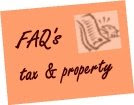(see www.mytaxzone.com.au for online ITWV applications)
Over those twenty five years I have provided a great deal of taxation advice in relation to property. In recent years the number of those enquiries has been increasing.
Property has always been an investment topic that mums and dads in Australia are familiar with. Due to the myriad of property TV programs, Internet property search sites, property magazines and aggressive property marketing strategies, Australians are becoming more and more "savey" about property - what to buy and locations.
And so they should. Property is a very important and, some would say, vital topic. If you are not interested in property, you should be.
Here are some interesting facts:
* Property growth over past several years has averaged 11% pa.
* There are over 1,5 mil taxpayers who own a rental property
* 29% of Australians are considering buying an investment property
* Properties in some areas are selling for more than the listed price
* Under supply of rental stocks is forcing rents higher and higher
There is absolutely no doubt that property in Australia is a HOT TOPIC.But, you might ask, what does taxation have to do with property?
Taxation can impact on property in three important ways:
1. A negatively geared rental property can produce significant taxation benefits for an investor
2. Tax effective property selection can nearly double that taxation benefit.
3. Taxation laws permits investors to access taxation benefits in their weekly pay, softening the impact on weekly cash flows.
What is property gearing?
In its simplest form, property gearing is structuring an investment project to generate either an income stream (positive gearing) or to generate a net loss (negative gearing). It is this negative gearing that we are addressing tonight.
How does Negative gearing relate to taxation?
Negative gearing is a common term, yet, many people do not fully understand the taxation benefits involved. With this strategy the loss is a tax deduction which, in most circumstances, translates into a taxation benefit, generating a tax refund for the investor.
For example, first year annual figures for a typical negatively geared rental property (purchase price $290000 with 106% loan) would look like this:
Rental income $294 per week. $15288
Expenses:Interest & rental expenses $27649
Loan costs $1004 (NON-CASH)
Depreciation - fittings $2000 (NON-CASH)
Depreciation - building $5000 (NON-CASH)
Total deductions $35653 (including NON-CASH)less Tax refund/credit (assuming 31.5%) $11231
After Tax Cash-flow (Excluding NON-CASH deductions) -$1130
****see discussion below relating to NON-CASH deductions*****
As can be seen the tax refund/credit of $11231 reduces the annual cost of the investment resulting in a net negative cash flow of $1130. The NON-CASH deductions of loan costs and depreciation etc are brought to account for tax purposes, but no cash outlay for those items occurred during the year. The cash outlay for those items occurred at the beginning of the investment project. The deduction merely recognises the declining values for ware and tear of the building and the fixtures & fittings contained within.
How can property selection nearly double the taxation benefit?
In this example, the interest & rental expenses taken into account were CASH deductions – these are actual running expenses incurred throughout the year.
For taxation purposes, NON-CASH deductions – claims that are made against the cost of the asset itself - can be taken in to account.
NON-CASH deductions include things like loan costs, depreciation on fixtures and write-off in relation to construction costs of the building.
LOAN COSTS are costs incurred in acquiring the loan funds and include loan application fees, search fees, government stamp duty on the loan, mortgage insurance etc. These cost are considered "capital" cost, but specific taxation legislation allows the costs to be deducted over the shorter of 5 years or the term of the loan. So these costs are claimed in the first 5 years of the investment.
DEPRECIATION is a tax deduction on the declining value of fixtures and fittings inside the property caused by wear and tear (eg floor covers, stove, hot water system). Depreciation is usually calculated on the reducing balance.
CAPITAL WORKS WRITE-OFF – is similar to depreciation but accounts for the declining value of the building itself (eg house structure, pergola, carport, garage etc.). Building Write-off is 2.5% of the construction cost and is written off over 40 years - ON THE ORIGINAL CONSTRUCTION COSTS.
*****NOTE - If you do not kow the original construction costs, valuations must be obtained from a licenced Quantity Surveyer.*******
Some restrictions apply to this Capital Works Write-off:* It only applies to residential dwellings constructed after July 1985* 4% rate applies to property constructed between 18/07/85 to 15/09/87* 2.5% rate applies to property constructed 16/09/87 onwards. This is where
SELECTING THE RIGHT PROPERTY can nearly double an investors taxation benefit.
For example, in the above property (which is a new dwelling), depreciation and building write-off were $2000 and $5000 respectively, amounting to a non-cash deduction of $7000.
The amounts for a property built 10 years ago will be less as the construction cost would be lower compared to today's construction costs.
Even worse, for a house built prior to July 1985, depreciation benefits would be negligible.
When do you get your tax benefit?
Investors who gear their property to gain maximum income tax benefits and who are subject to normal withholding tax from their weekly pay have two options:
1. Pay the normal withholding tax from your weekly pay and receive a larger refund when we lodge your annual income tax return, or
2. By lodging an ITWV application, the Australian Taxation Office can vary the amount of tax withheld from your weekly pay resulting in more take home pay.
If you are considering investing in residential property in Australia - therein lies the wealth hidden in your salary:
1. By structuring an investment property to take advantage of negative gearing, significant taxation benefits can be obtained
2. By selecting a property to obtain maximum NON-CASH deductions, taxation benefits can be significantly increased
3. By lodging an ITWV application with the ATO, the tax benefit can be obtained when you most need it – each week – reducing the threat of a cash flow crisis.If you have any queries regarding this blog, please email us and we will do our best to answer them for you.
By David Maynard
CEO - My Tax Zone
02 October 2007
Subscribe to:
Posts (Atom)

